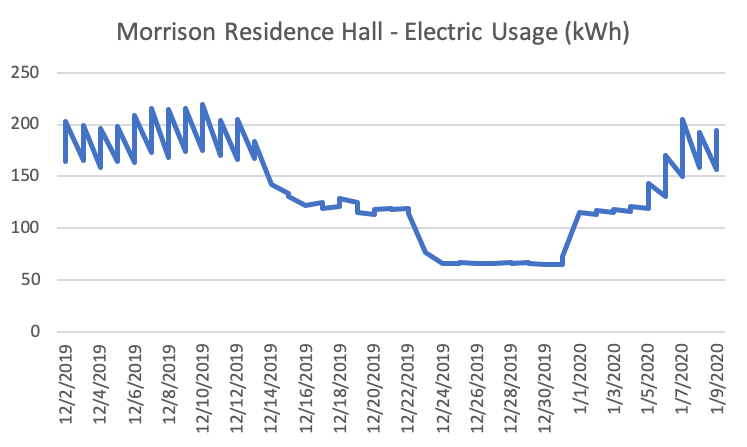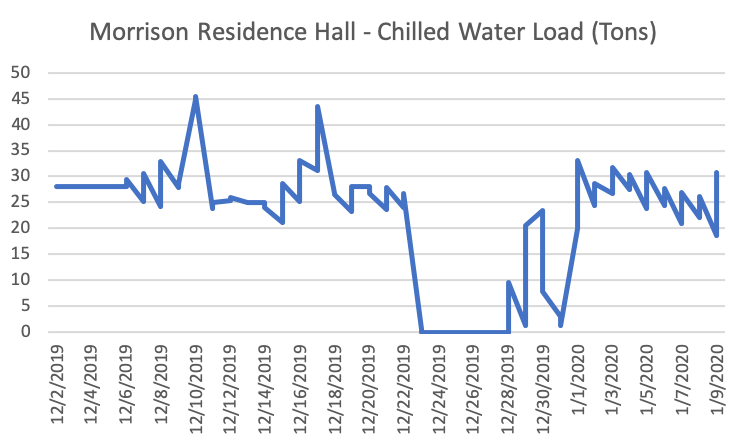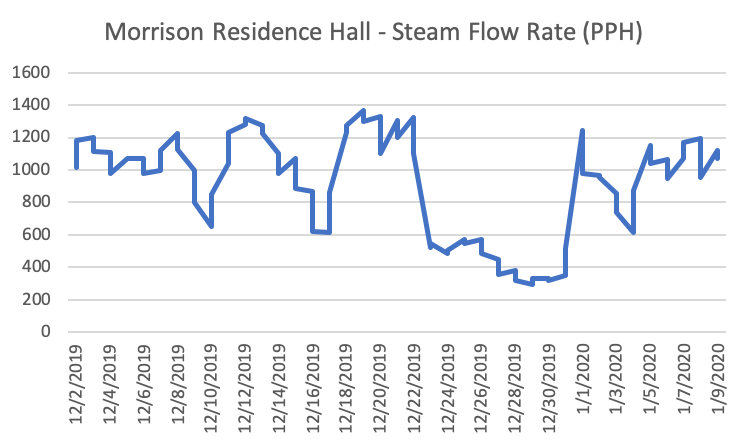When the University closes for winter break, typically for nine to 11 days, the departure of students and staff provides opportunities for energy savings in buildings that will remain unoccupied during the break. Energy Management works with Energy Management Control Systems and campus building partners to implement energy-saving strategies over the closure days.
Since the first winter break energy saving initiative in 2016, the University has recognized an estimated combined avoided energy cost of $325,500.
A common and effective strategy is to shut off the air handling units that supply heating and cooling to campus buildings. This allows for savings of fan energy in the form of electricity and savings of heating or cooling energy in the form of steam and chilled water. Other energy-saving strategies include relaxing building temperature setpoints and encouraging staff and students to turn off all lights, close windows and fume hood sashes, and turn off and unplug unnecessary electronics and equipment before they leave campus for the break.
For the 2019 winter break, Facilities Services implemented HVAC control strategies in 75 buildings and launched an outreach effort to the whole campus. The resulting energy reduction of about 7,900,000 kBtus represents an estimated avoided energy cost of $81,400 based on energy usage rates for December 2019. Since the first winter break energy saving initiative in 2016, the University has recognized an estimated combined avoided energy cost of $325,500.
To determine the estimated energy savings, Energy Management reviews meter data from electric, steam and chilled water usage for the closure period and compares these actual consumption values to projected consumption values for the same time period. The projection model considers many parameters including consumption patterns for the past 12 months and outdoor temperature and humidity values for the closure period, as weather conditions can impact savings potential. If outside temperatures drop to freezing, safety overrides will bring the air handling units back on to provide heating in buildings and protect equipment from freezing. Likewise, if outdoor temperatures are warm and humidity levels are high, equipment will come back online to provide dehumidification to buildings.
The following graphs show interval data from the utility meters at Morrison Residence Hall for Dec. 2, 2019, through Jan. 9, 2020. The impacts of the energy saving initiatives implemented for this building are apparent in the drops in usage seen for Dec. 23 through Dec. 31.



Reducing energy use in unoccupied campus buildings not only leads to cost savings but also reduces campus greenhouse gas emissions and is one of many ways the University is looking to further reduce energy consumption in support of the Three Zeros Environmental Initiative. Launched in fall 2016, the initiative calls for reducing the University’s environmental footprint through three sustainability goals: net zero water usage, zero waste to landfills and net zero greenhouse gas emissions.
For more information about this energy saving initiative, please contact Energy Management at save-energy@unc.edu.
